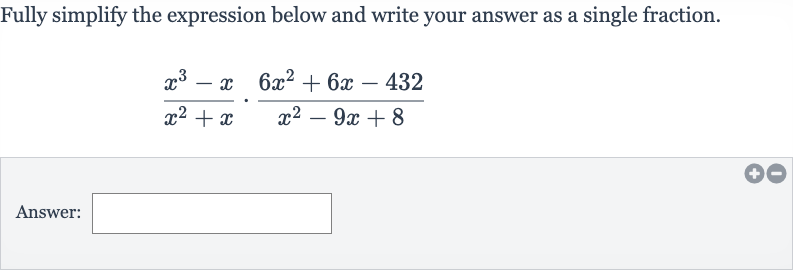AI tutor
Welcome to Bytelearn!
Let’s check out your problem:

Fully simplify the expression below and write your answer as a single fraction.Answer:
Full solution
Q. Fully simplify the expression below and write your answer as a single fraction.Answer:
- Factor Numerator and Denominator: Factor the numerator and denominator of both fractions where possible.The first fraction's numerator can be factored by recognizing it as a difference of squares:The first fraction's denominator is already factored:The second fraction's numerator does not factor nicely, but we can factor out a common factor of :The second fraction's denominator can be factored as a quadratic:
- Rewrite with Factored Terms: Rewrite the expression with the factored terms.Now we have: *
- Cancel Common Factors: Cancel out the common factors in the numerator and denominator.In the first fraction, and are common to both the numerator and the denominator, so they cancel out. In the second fraction, is common to both the numerator and the denominator, so it cancels out as well.After canceling, we have:
- Expand Remaining Terms: Expand the remaining terms in the numerator of the second fraction.We need to distribute the to each term inside the parentheses:Now the expression looks like this:
- Multiply Remaining Terms: Multiply the remaining terms in the numerator.We multiply by each term in the numerator of the second fraction:
- Combine Like Terms: Combine like terms in the numerator.After distributing, we combine the like terms:Now the expression is:
- Check for Further Simplification: Check for any further simplification.We can factor out a from the numerator to see if there is any further simplification:However, the expression does not factor nicely, and there are no common factors with the denominator . So, this is the final simplified form.
More problems from Multiplication with rational exponents
QuestionGet tutor help
QuestionGet tutor help
QuestionGet tutor help
QuestionGet tutor help
QuestionGet tutor help
